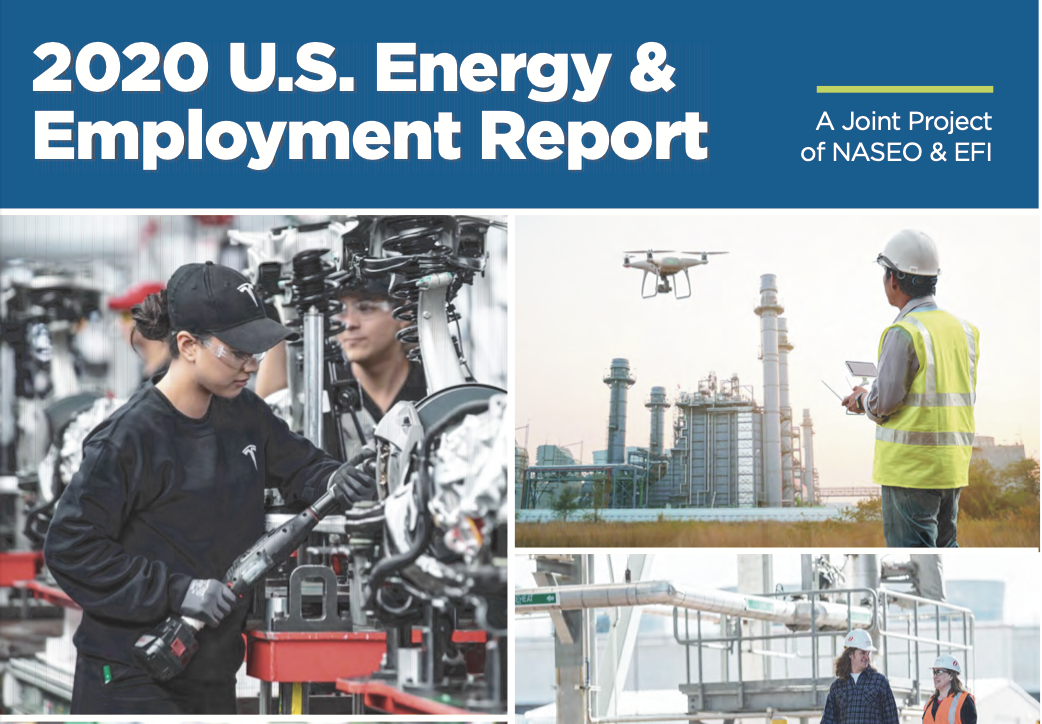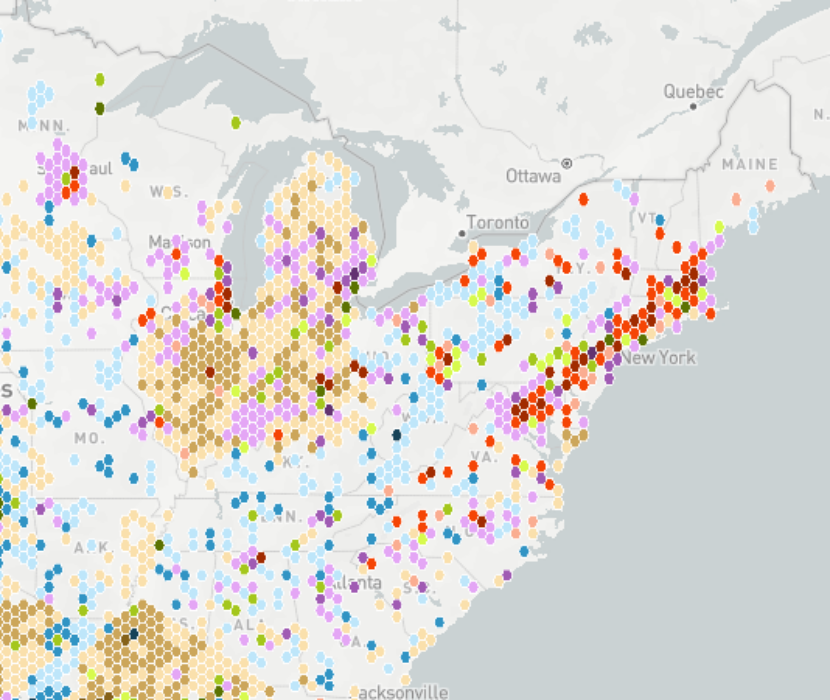Five-Year Trends: The USEER 2016-2020 (March 2020) was published by the Energy Futures Initiative (EFI) and the National Association of State Energy Officials (NASEO). This supplemental report collated the findings of the first five editions of the U.S. Energy & Employment Report (USEER) from 2016–2020, incorporating the data produced by the BW Research Partnership for the U.S. Department of Energy (2016, 2017) and the EFI-NASEO project team (2018, 2019, 2020). It also serves as a summary analysis of that data.
Included are the five major energy, energy efficiency, and motor vehicles technologies (the first three of which comprise the “traditional energy” sector):
- Fuels
- Electric power generation
- Transmission, distribution, and storage
- Energy efficiency
- Motor vehicles, including component parts
In 2019, U.S. energy, energy efficiency, and motor vehicles firms employed more than 8.27 million Americans, comprising 5.4 percent of the U.S. workforce. The traditional sectors—focused on the production of fuels and electricity and their transmission and distribution to end users—employ 3.3 million Americans. Meanwhile, the downstream sectors of energy efficiency and motor vehicles focused increasingly during the last five years on reducing consumption of the fuels and electricity produced upstream. Despite these contradictory tendencies, employment in these five sectors of the economy grew 12.4 percent from 2015–2019, outpacing the U.S. general economy’s employment growth.
Related Content
(Share this post with others.)







